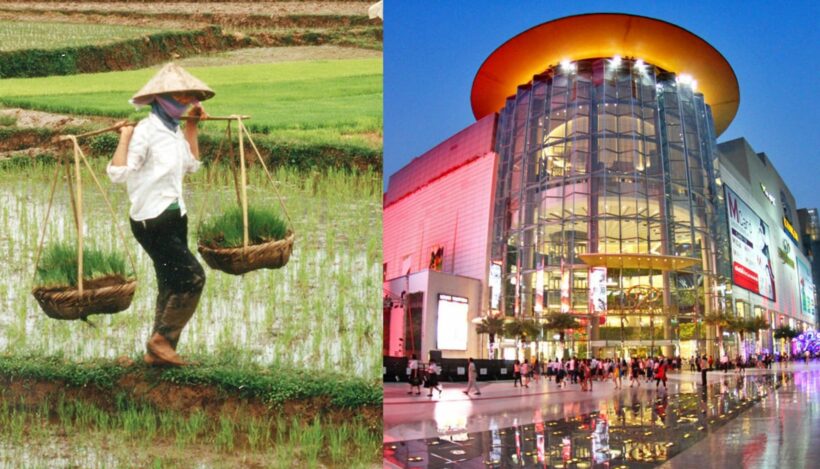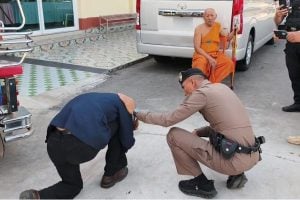Laos – the ‘battery’ of Asia and a ticking environmental time bomb

LAOS POWER FACTS:
Number of power plants soon to be completed by the end of 2020: 53 hydropower plants under construction or in the planning stage, including those set to be completed this year; there will be more than 90 hydropower plants in Laos with a combined installed capacity of almost 14,000MW.
Transmission lines that connect with neighbouring countries: 14 carry power to Thailand, 2 to Vietnam, 1 to China, 2 to Cambodia, and 1 to Myanmar.
Trick question. What uses more power? Siam Paragon in Bangkok or the entire province of Mae Hong Son (with 250,000 residents in north-west Thailand)?
The astonishing answer is, of course, Siam Paragon. By a factor of DOUBLE the power consumption of the north-western Thai province near the Myanmar border. Siam Paragon consumes 123 GWh of electricity a year (in 2011), compared to the quarter-million inhabitants of Mae Hong Son Province, who over the same period, used 65 GWh.
So, whilst you trek across some ancient hills enjoying an old and proud culture in Thailand’s north-west you need to compare that with some of the opulent malls in central Bangkok which can easily compare with their counterparts in Singapore, New York or London.
The worlds of luxury brands Louis Vuitton, Chanel, Prada, Tiffany and Cartier, and the power these shops consume, is an entirely different world from other parts of rural Thailand. But Siam Paragon is just one of half a dozen luxury malls sprawled along a 6 kilometre stretch of the city’s upscale Sukhumvit stretch. They all consume vast amounts of power along with a growing number of expensive condominium projects.
So, Thailand has turned to Laos and the hydro-electric potential along the Mekong to feed its growing electricity demand. Xayaburi and Don Sahong dams, currently under construction, are among the cornerstones of a dam-building bonanza by Laos to realise its aspiration to become the “Battery of Asia”. Thailand is one of Laos’ key partners and buyers of power. And the kingdom’s largest energy consumer is (no surprise here) Bangkok, with it’s sparkling lights and air-conditioning ticking over the electricity meters at rapid pace.
Many analysts worry the planned hydropower dams will devastate fish populations, harm agriculture and hurt culture and tourism along the fragile Mekong basin, threatening the livelihoods of 65 million people who rely on the river for income and food.
With 42 power plants now operational, Laos is poised to realise its electricity ambitions. With a current installed capacity of approximately 6,000MW, the Lao government expects to achieve 14,000MW by the end of this year.
Thailand is not on its own with massive development and expansion putting pressure on the older ways of life. But the disparity in the Kingdom between the power-hungry city life and the older-style agriculture is now sharply in focus with this new deal with the Laos power providers.
But a devastating collapse at a hydro dam in July 2018 shon the spotlight on Laos’ energy ambitions again. The devastation caused by the collapse of the Xepian-Xe Nam Noy dam in Attapeu province was sharp proof of the potential dangers in the Laotian government’s plans. The landlocked country sells much of its electricity abroad, which makes up 30-40% of its total exports.
The Lao PDR government is planning to double current energy production in the next 2 years. But environmental groups are warning of the project’s impact on the environment and the nations the river supports.
The movement of water, fish and sediment downstream has historically supported tens of millions of people along the Mekong, and efforts to constrain its flow are proving disastrous for the riverside communities.
For nearly 20 years, activists have called for action against the development of hydro-dams and water projects. But this month the campaign took the next step with plans to focus on taking action at the policy level.
It took 2 decades, but activists have now launched the “Mekong People’s Forum.” 200 people attended the forum including local villagers, conservationists, journalists, and representatives from the US and Australian embassies. The Chinese embassy, although invited, did not send anyone to attend the event. China is responsible for 11 dams along the Mekong.
This is the first time the many conservation groups and activists have come together with a single forum to tackle the many challenges for the river. Several dams have now been built upstream in Laos and China causing massive problems for the natural flow of the river downstream through Myanmar, Laos, Thailand, Cambodia and Vietnam.
Latest Thailand News
Follow The Thaiger on Google News:


























